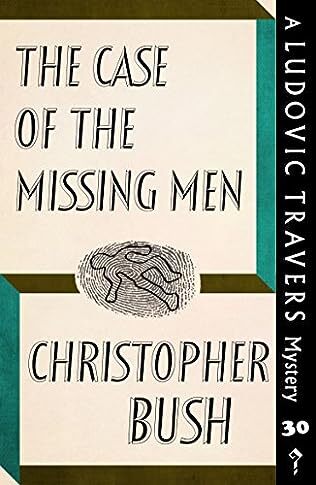The Case Of The Missing Men

A review of The Case of the Missing Men by Christopher Bush – 230810
Fans of Christopher Bush have come to expect a well-plotted, intriguing mystery, one full of red herrings, seemingly cast-iron alibis but with enough clues that the attentive reader can join in the fun and see whether they can beat his series sleuth, Ludovic Travers, to the answer. Along the way Travers will be sparring with his long-term partner in solving crimes, Superintendent George Wharton of the Yard, each competitive enough to want to be the one to work out whodunit but whose approaches and skills complement each other so that all aspects of the case are covered.
In The Case of the Missing Men, the thirtieth in Bush’s Travers series, originally published in 1946 and reissued by Dean Street Press, we have all these elements in spades, making for an entertaining read and a book that is up there amongst my Bush favourites. As is the norm now the story is narrated by Travers and takes the form of an expanded version of his statements to Inspector Goodman of the local police about what was going on during his visit to Lovelands, the Beechford home of successful crime writer, Austin Chaice.
Travers has three invitations to go down there, two by letter – one from Chaice who wants to discuss some finer points of detection for his proposed manual for crime writers, and the other from his literary agent, Cuthbert Daine, who wants to finalise a contract for the reissue of a couple of Travers’ books – and one by telephone from a confused and distressed Constance Chaice, Austin’s wife, who has premonitions that something is going to happen. Inevitably, where a series sleuth goes, murder will follow.
There are two deaths, first Chaice and then his son, Martin. Martin’s death looks like suicide, but the murderer has made the classic mistake of getting the victim’s fingerprints not quite right on the gun. The method in which the murder was carried out was ingenious, although I am sure I have come across a variant of it before, although the addition of an alibi, amusingly involving a visit to the lavatory, was a nice touch. Initially, Martin seemed to have every reason to hate his father, his literary ambitions were scorned, and he was a beneficiary of the will, but his death seems to rule him out.
One of the curious things about the case is that after each death, someone disappears – the mysterious G H Preston after Austin’s death and Richard Chaice, Austin’s brother who is prone to periods of abstraction, after Martin’s. These two missing men give the book its title, but, frankly, it is a bit of a lame one.
While Goodman is in charge of the initial investigation, the pace hots up when Wharton arrives on the scene about three-quarters of the way through the book. He recognises the importance of Travers’ failure to recognise that what he thought was a stick of lipstick was actually greasepaint and through a clever piece of deduction solves the G H Preston whereabouts. However, it is Travers who puts all the pieces together to reveal not only who the murderer is but also the motives behind their crimes. He reveals all in the form of an exposition of a plot for a murder mystery, the telling of which puts him in peril of his life and earns him a blow on the head.
Wharton and Travers work well as a team in this story and intriguingly Travers reveals that the pair are considering setting up a detective agency when Wharton retires. I thought it took a little to set up the plot, but once it got going it was a thoroughly enjoyable read.



